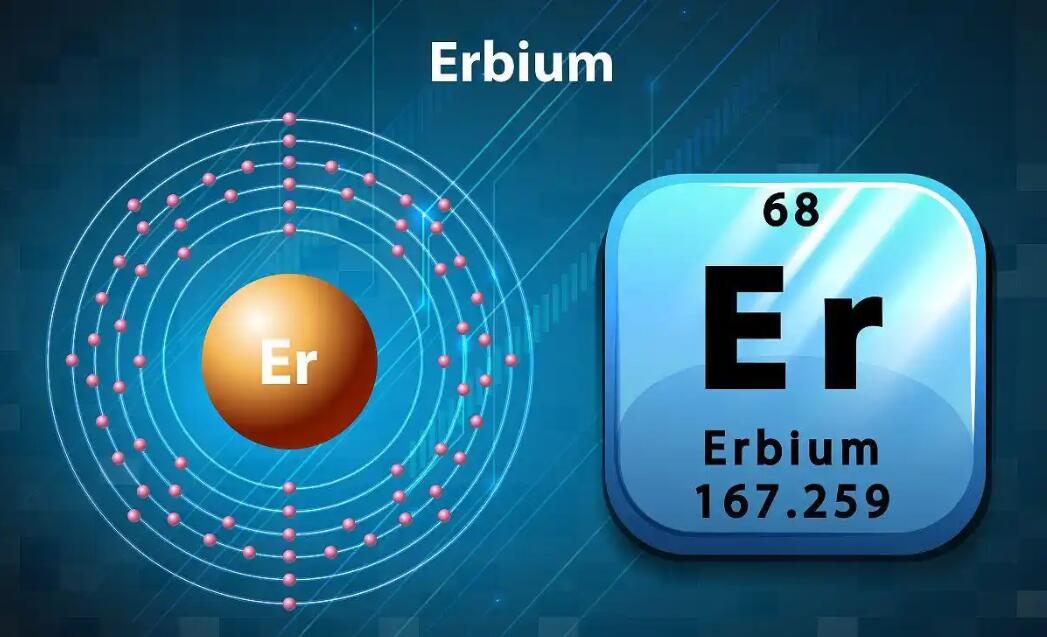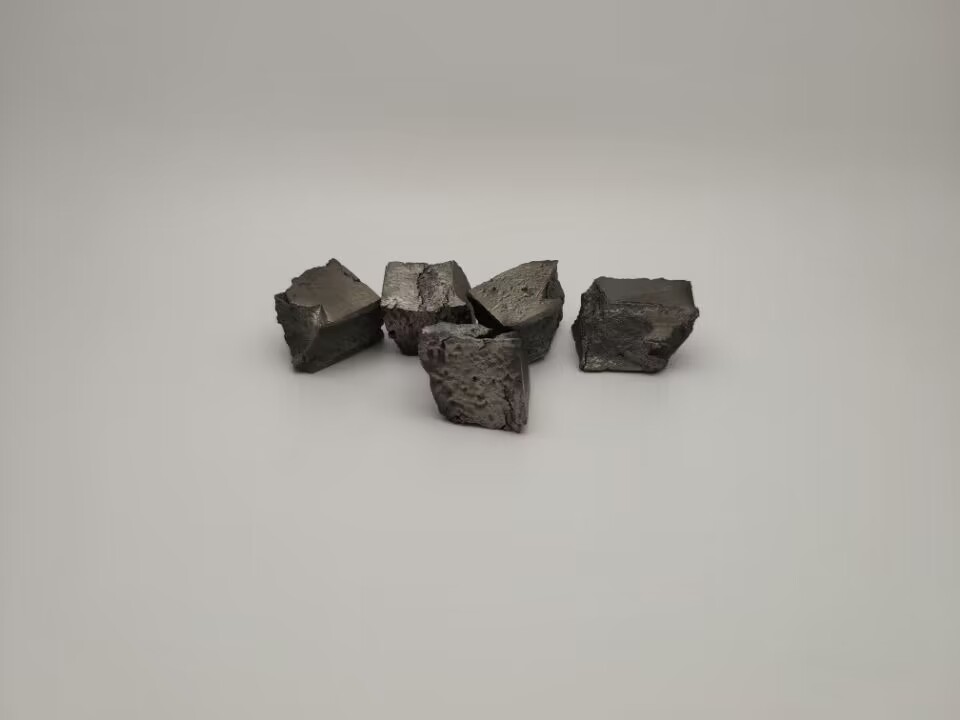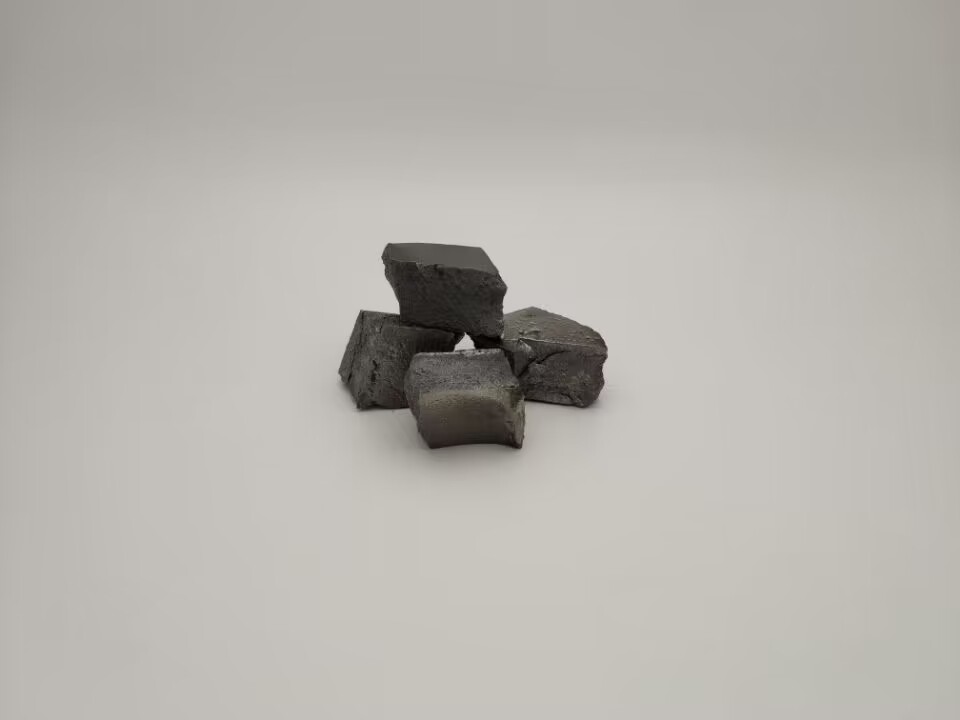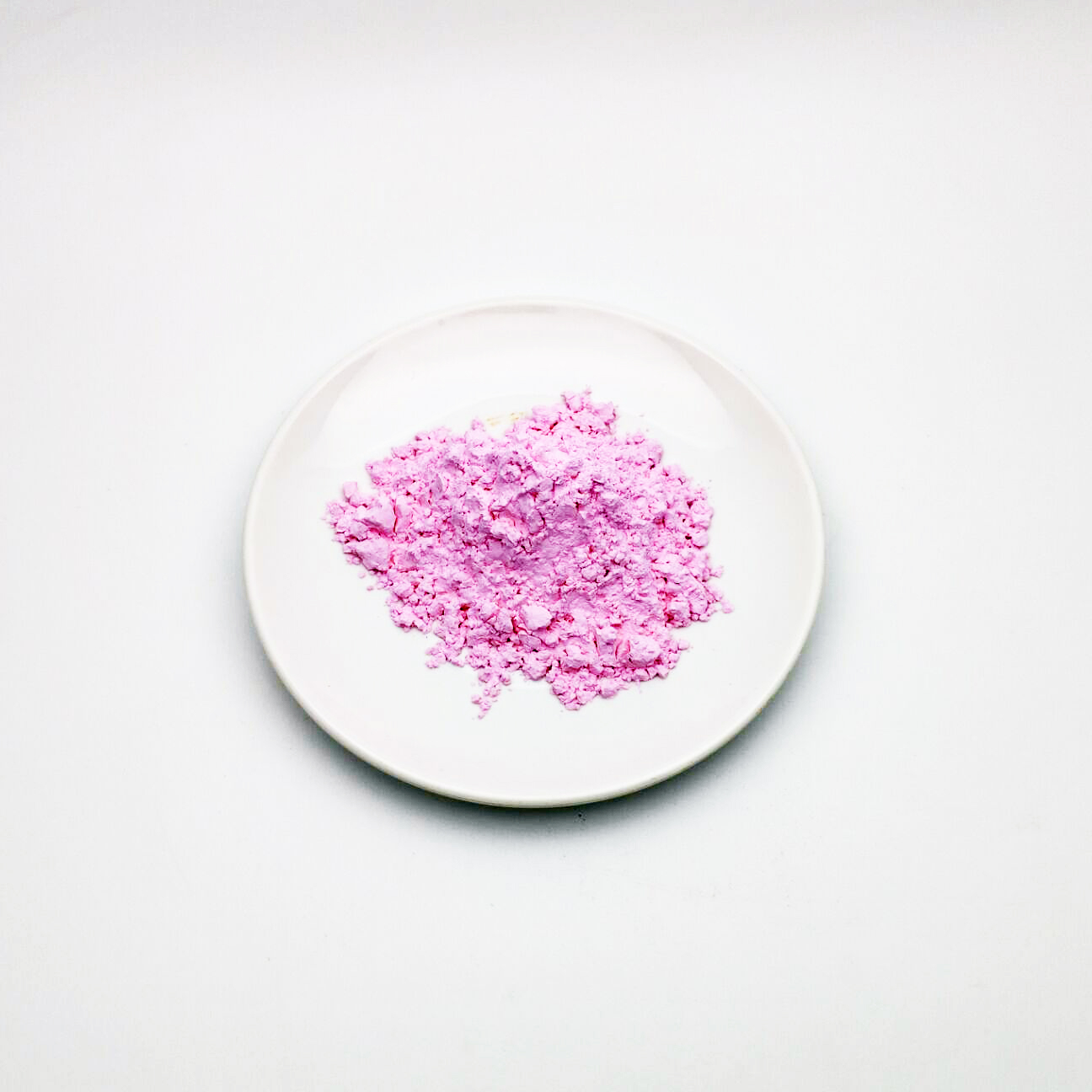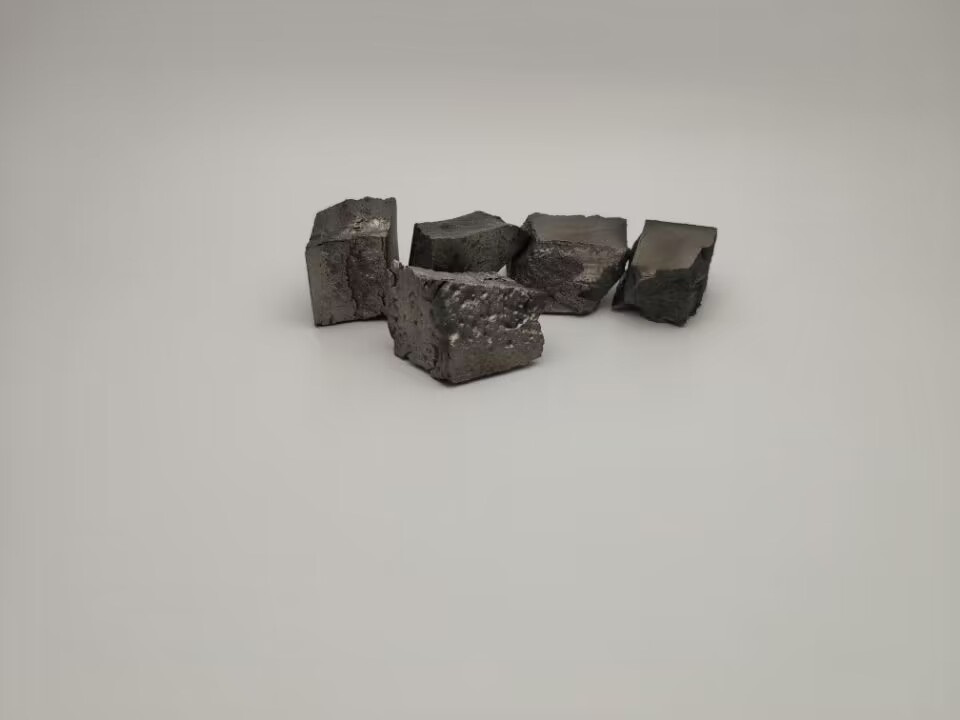What is Erbium element metal,application, properties and commonly used testing methods
As we explore the wonderful world of elements, erbium attracts our attention with its unique properties and potential application value. From the deep sea to outer space, from modern electronic devices to green energy technology, the application of erbium in the field of science continues to expand, showing its incomparable value.
Erbium was discovered by Swedish chemist Mosander in 1843 by analyzing yttrium. He originally named the oxide of erbium as terbium oxide, so in early German literature, terbium oxide and erbium oxide were confused.
It was not until after 1860 that it was corrected. In the same period when lanthanum was discovered, Mosander analyzed and studied the originally discovered yttrium, and published a report in 1842, clarifying that the originally discovered yttrium was not a single element oxide, but an oxide of three elements. He still called one of them yttrium, and named one of them erbia (erbium earth). The element symbol is set as Er. It is named after the place where yttrium ore was first discovered, the small town of Ytter by near Stockholm, Sweden. The discovery of erbium and two other elements, lanthanum and terbium, opened the second door to the discovery of rare earth elements, which is the second stage of the discovery of rare earth elements. Their discovery is the third of the rare earth elements after cerium and yttrium.
Today, we will embark on this exploration journey together to gain a deeper understanding of the unique properties of erbium and its application in modern technology.
Application fields of erbium element
1. Laser technology: Erbium element is widely used in laser technology, especially in solid-state lasers. Erbium ions can produce lasers with a wavelength of about 1.5 microns in solid-state laser materials, which is of great significance for fields such as fiber-optic communications and medical laser surgery.
2. Fiber-optic communications: Since erbium element can produce the wavelength required to work in fiber-optic communications, it is used in fiber amplifiers. This helps to enhance the transmission distance and efficiency of optical signals and improve the performance of communication networks.
3. Medical laser surgery: Erbium lasers are widely used in the medical field, especially for tissue cutting and coagulation. The choice of its wavelength allows erbium lasers to be effectively absorbed and used for high-precision laser surgery, such as ophthalmic surgery.
4. Magnetic materials and magnetic resonance imaging (MRI): The addition of erbium to some magnetic materials can change their magnetic properties, making them important applications in magnetic resonance imaging (MRI). Erbium-added magnetic materials can be used to improve the contrast of MRI images.
5. Optical amplifiers: Erbium is also used in optical amplifiers. By adding erbium to the amplifier, gain can be achieved in the communication system, increasing the strength and transmission distance of the optical signal.
6. Nuclear energy industry: Erbium-167 isotope has a high neutron cross section, so it is used as a neutron source in the nuclear energy industry for neutron detection and control of nuclear reactors.
7. Research and laboratories: Erbium is used as a unique detector and marker in the laboratory for research and laboratory applications. Its special spectral properties and magnetic properties make it play an important role in scientific research.
Erbium plays an indispensable role in modern science and technology and medicine, and its unique properties provide important support for various applications.
Physical Properties of Erbium
Appearance: Erbium is a silvery white, solid metal.
Density: Erbium has a density of about 9.066 g/cm3. This indicates that erbium is a relatively dense metal.
Melting Point: Erbium has a melting point of 1,529 degrees Celsius (2,784 degrees Fahrenheit). This means that at high temperatures, erbium can transition from a solid state to a liquid state.
Boiling Point: Erbium has a boiling point of 2,870 degrees Celsius (5,198 degrees Fahrenheit). This is the point at which erbium transitions from a liquid state to a gaseous state at high temperatures.
Conductivity: Erbium is one of the more conductive metals and has good electrical conductivity.
Magnetism: At room temperature, erbium is a ferromagnetic material. It exhibits ferromagnetism below a certain temperature, but loses this property at higher temperatures.
Magnetic moment: Erbium has a relatively large magnetic moment, which makes it important in magnetic materials and magnetic applications.
Crystal structure: At room temperature, the crystal structure of erbium is hexagonal closest packing. This structure affects its properties in the solid state.
Thermal conductivity: Erbium has a high thermal conductivity, indicating that it performs well in thermal conductivity.
Radioactivity: Erbium itself is not a radioactive element, and its stable isotopes are relatively abundant.
Spectral properties: Erbium shows specific absorption and emission lines in the visible and near-infrared spectral regions, which makes it useful in laser technology and optical applications.
The physical properties of the erbium element make it widely used in laser technology, optical communications, medicine and other scientific and technological fields.
Chemical properties of erbium
Chemical symbol: The chemical symbol of erbium is Er.
Oxidation state: Erbium usually exists in the +3 oxidation state, which is its most common oxidation state. In compounds, erbium can form Er^3+ ions.
Reactivity: Erbium is relatively stable at room temperature, but it will be slowly oxidized in air. It reacts slowly to water and acids, so it can remain relatively stable in some applications.
Solubility: Erbium dissolves in common inorganic acids to produce the corresponding erbium salts.
Reaction with oxygen: Erbium reacts with oxygen to form oxides, mainly Er2O3 (erbium dioxide). This is a rose-red solid commonly used in ceramic glazes and other applications.
Reaction with halogens: Erbium can react with halogens to form corresponding halides, such as erbium fluoride (ErF3), erbium chloride (ErCl3), etc.
Reaction with sulfur: Erbium can react with sulfur to form sulfides, such as erbium sulfide (Er2S3).
Reaction with nitrogen: Erbium reacts with nitrogen to form erbium nitride (ErN).
Complexes: Erbium forms a variety of complexes, especially in organometallic chemistry. These complexes have application value in catalysis and other fields.
Stable isotopes: Erbium has multiple stable isotopes, the most abundant of which is Er-166. In addition, erbium has some radioactive isotopes, but their relative abundance is low.
The chemical properties of the element erbium make it an important component of many high-tech applications, showing its versatility in different fields.
Biological properties of erbium
Erbium has relatively few biological properties in organisms, but some studies have shown that it may participate in some biological processes under certain conditions.
Biological availability: Erbium is a trace element for many organisms, but its bioavailability in organisms is relatively low. Lanthanum ions are difficult to be absorbed and utilized by organisms, so they rarely play an important role in organisms.
Toxicity: Erbium is generally considered to have low toxicity, especially compared to other rare earth elements. Erbium compounds are considered relatively harmless at certain concentrations. However, high concentrations of lanthanum ions may have harmful effects on organisms, such as cell damage and interference with physiological functions.
Biological participation: Although erbium has relatively few functions in organisms, some studies have shown that it may participate in some specific biological processes. For example, some studies have shown that erbium may play a certain role in promoting the growth and flowering of plants.
Medical applications: Erbium and its compounds also have certain applications in the medical field. For example, erbium can be used in the treatment of certain radionuclides, as a contrast agent for the gastrointestinal tract, and as an auxiliary additive for certain drugs. In medical imaging, erbium compounds are sometimes used as contrast agents.
Content in the body: Erbium exists in small quantities in nature, so its content in most organisms is also relatively low. In some studies, it has been found that some microorganisms and plants may be able to absorb and accumulate erbium.
It should be noted that erbium is not an essential element for the human body, so the understanding of its biological functions is still relatively limited. At present, the main applications of erbium are still concentrated in technical fields such as materials science, optics, and medicine, rather than in the field of biology.
Mining and production of erbium
Erbium is a rare earth element that is relatively rare in nature.
1. Existence in the earth’s crust: Erbium exists in the earth’s crust, but its content is relatively low. Its average content is about 0.3 mg/kg. Erbium mainly exists in the form of ores, together with other rare earth elements.
2. Distribution in ores: Erbium mainly exists in the form of ores. Common ores include yttrium erbium ore, erbium aluminum stone, erbium potassium stone, etc. These ores usually contain other rare earth elements at the same time. Erbium usually exists in trivalent form.
3. Major countries of production: The major countries of erbium production include China, the United States, Australia, Brazil, etc. These countries play an important role in the production of rare earth elements.
4. Extraction method: Erbium is usually extracted from ores through the extraction process of rare earth elements. This involves a series of chemical and smelting steps to separate and purify erbium.
5. Relationship with other elements: Erbium has similar properties to other rare earth elements, so in the extraction and separation process, it is often necessary to consider the coexistence and mutual influence with other rare earth elements.
6. Application areas: Erbium is widely used in the field of science and technology, especially in optical communications, laser technology and medical imaging. Due to its anti-reflection properties in glass, erbium is also used in the preparation of optical glass.
Although erbium is relatively rare in the earth’s crust, due to its unique properties in some high-tech applications, the demand for it has gradually increased, resulting in the continuous development and improvement of related mining and refining technologies.
Common Detection Methods for Erbium
The detection methods for erbium usually involve analytical chemistry techniques. The following is a detailed introduction to some commonly used erbium detection methods:
1. Atomic Absorption Spectrometry (AAS): AAS is a commonly used quantitative analysis method suitable for determining the content of metal elements in a sample. In AAS, the sample is atomized and passed through a beam of light of a specific wavelength, and the intensity of the light absorbed in the sample is detected to determine the concentration of the element.
2. Inductively Coupled Plasma Optical Emission Spectrometry (ICP-OES): ICP-OES is a highly sensitive analytical technique suitable for multi-element analysis. In ICP-OES, the sample passes through an inductively coupled plasma to generate a high-temperature plasma that excites the atoms in the sample to emit a spectrum. By detecting the wavelength and intensity of the emitted light, the concentration of each element in the sample can be determined.
3. Mass Spectrometry (ICP-MS): ICP-MS combines the generation of inductively coupled plasma with the high resolution of mass spectrometry and can be used for elemental analysis at extremely low concentrations. In ICP-MS, the sample is vaporized and ionized, and then detected by a mass spectrometer to obtain the mass spectrum of each element, thereby determining its concentration.
4. Fluorescence spectroscopy: Fluorescence spectroscopy determines the concentration by exciting the erbium element in the sample and measuring the emitted fluorescence signal. This method is particularly effective for tracking rare earth elements.
5. Chromatography: Chromatography can be used to separate and detect erbium compounds. For example, ion exchange chromatography and reversed phase liquid chromatography can both be applied to the analysis of erbium.
These methods usually need to be performed in a laboratory environment and require the use of advanced instruments and equipment. The selection of an appropriate detection method usually depends on the nature of the sample, the required sensitivity, resolution, and the availability of laboratory equipment.
Specific application of atomic absorption method for measuring erbium element
In element measurement, atomic absorption method has high accuracy and sensitivity, and provides an effective means for studying the chemical properties, compound composition and content of elements.
Next, we use atomic absorption method to measure the content of erbium element. The specific steps are as follows:
First, it is necessary to prepare a sample containing erbium element. The sample can be solid, liquid or gas. For solid samples, it is usually necessary to dissolve or melt them for the subsequent atomization process.
Choose a suitable atomic absorption spectrometer. According to the properties of the sample to be measured and the range of erbium content to be measured, select a suitable atomic absorption spectrometer.
Adjust the parameters of the atomic absorption spectrometer. According to the element to be measured and the instrument model, adjust the parameters of the atomic absorption spectrometer, including light source, atomizer, detector, etc.
Measure the absorbance of erbium element. Place the sample to be tested in the atomizer, and emit light radiation of a specific wavelength through the light source. The erbium element to be tested will absorb this light radiation and produce energy level transition. The absorbance of the erbium element is measured by the detector.
Calculate the content of the erbium element. Calculate the content of the erbium element based on the absorbance and the standard curve.
On the scientific stage, erbium, with its mysterious and unique properties, has added a wonderful touch to human technological exploration and innovation. From the depths of the earth’s crust to high-tech applications in the laboratory, erbium’s journey has witnessed mankind’s unremitting pursuit of the mystery of the element. Its application in optical communications, laser technology and medicine has injected more possibilities into our lives, allowing us to peek into areas that were once obscured.
Just as erbium shines through a piece of crystal glass in optics to illuminate the unknown road ahead, it opens a door to the abyss of knowledge for researchers in the hall of science. Erbium is not only a shining star on the periodic table, but also a powerful assistant for mankind to climb the peak of science and technology.
I hope that in the years to come, we can explore the mystery of erbium more deeply and dig out more amazing applications, so that this “element star” will continue to shine and illuminate the way forward in the course of human development. The story of the element erbium continues, and we are looking forward to what future miracles erbium will show us on the scientific stage.
For more information pls contact us below :
Whatsapp&tel:008613524231522
Email:sales@shxlchem.com
